OTB’s Guide to Today’s British Election
Today, voters in Great Britain and Northern Ireland go to the polls to elect a new Parliament and–most likely–indirectly choose an new government as well. In this post, I’ll try to give a high-level overview of the context of the election and perhaps break out the crystal ball to make some tentative predictions as well.
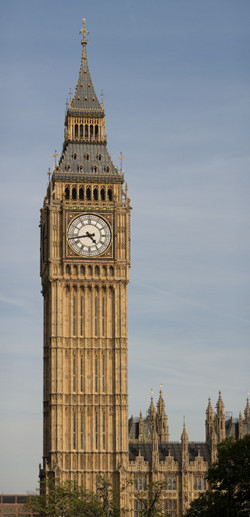 The basics: Today’s election will fill 649 of the 650 seats in the House of Commons, the directly elected chamber of the British parliament; one seat will be filled at a by-election later this month due to the death of a minor-party candidate during the campaign. Each seat, like seats in the U.S. Congress, is filled on a “winner-takes-all” (plurality/first-past-the-post) basis, even if a candidate does not get an outright majority of the vote in the constituency (district), and each constituency elects a single member to the Commons.
The basics: Today’s election will fill 649 of the 650 seats in the House of Commons, the directly elected chamber of the British parliament; one seat will be filled at a by-election later this month due to the death of a minor-party candidate during the campaign. Each seat, like seats in the U.S. Congress, is filled on a “winner-takes-all” (plurality/first-past-the-post) basis, even if a candidate does not get an outright majority of the vote in the constituency (district), and each constituency elects a single member to the Commons.
By modern convention, if a party wins a majority of the seats in the Commons (effectively around 322–325 in the upcoming parliament, as the Speaker is officially nonpartisan and does not usually vote and Sinn Féin is unlikely to take their seats), its leader will be invited by the Queen to form a government.
If no party wins an outright majority, the incumbent prime minister–in this case, Gordon Brown of the Labour Party, since late 2007–by convention (see Chapter 6 of the Cabinet Manual) will have the first opportunity to attempt to form a government, either as a formal coalition that commands a majority of the Commons — rare in British politics at the national level — or a “minority government” that relies on the tacit support of parties outside of the government to pass legislation and sustain the government.
In Britain, an election that has no clear winner typically results in what is called a hung parliament, on the presumption that the country will not be governable after such an election. While minority governments have tended to be unstable and short-lived, for much of the last Conservative government under John Major (1992–97) his party was able to remain in government for several years with the support of minor-party lawmakers (principally from the Ulster Unionist Party) after his majority evaporated due to Conservative defections and by-election losses over time.
Dramatis personae: The vast majority of the British population lives in England, which consequently has the most seats in the Commons: 533 of the 650 total seats. In England, there are three major parties contesting the election:
- The Conservative Party, led by David Cameron, which has its origins in the pre-partisan era of British politics (essentially prior to the 1830s). The Conservatives are commonly referred to as the “Tories,” after the pro-monarchical faction of the Commons that existed in the pre-partisan era. The Conservatives are traditionally the party of the wealthy and upper middle class, and also of small business; they are also traditionally the most nationalistic and pro-Union (essentially, in favor of the traditional British unitary state that existed prior to 1997, rather than supportive of devolution of power), to the extent that the Conservatives are legally incorporated as the “Conservative and Unionist Party.”
The Conservatives are the most “Euroskeptical” of the three major parties, although there is a significant pro-integrationist faction. They lie on the center-right of the British and European political spectrum. They are often compared with the U.S. Republican Party, perhaps due to their similar social bases, but the Conservatives tend to be more secular and less socially conservative than their American counterparts.
- The Labour Party, led by Gordon Brown, which emerged as a social democratic party around the turn of the 20th century. Labour is traditionally the party of the British working class, although the party has reached out more effectively to white collar voters since the 1980s under the leadership of then-opposition leaders Neil Kinnock, John Smith, and Tony Blair, leading to its 1997 General Election victory. Historically Labour was committed to nationalization of major industry and a more socialist economic model, as well as a more conciliatory stance towards the former Soviet Union and its Eastern European satellite states during the Cold War (at one point being in favor of unilateral nuclear disarmament by Britain).
Labour today is effectively on the center-left of the political spectrum, although the party does still have some vestiges of the pre-Kinnock far left despite purges in the 1980s and 1990s, particularly in the inner cities. Labour has presided over the devolution of power to elected Scottish and Welsh legislatures, as well as the reimplementation of local rule in Northern Ireland based on the Good Friday agreement, as well as a half-hearted effort to democratize the House of Lords (the unelected chamber of Parliament).
- The Liberal Democrats, led by Nick Clegg, which has its roots along with the Tories in 19th century politics and the former Liberal Party that existed until the late 1980s. The Liberals were displaced as a major party with the rise of Labour in the early 20th century as the Liberal-Labour electoral alliance of the day ceased to be necessary for Labour to influence government policy. For most of the 20th century, the Liberals were in the electoral wilderness; however, in the 1980s a centrist offshoot of Labour (the former “Social Democratic Party,” comprised of Labour politicians who were frustrated with Labour’s failure to rein in the far left during that period) emerged and formed an electoral alliance with the Liberals, which then was formalized as a unified “Social and Liberal Democratic Party” in the late 1980s. It was soon recognized that “SLDP” didn’t exactly roll off the tongue, and after an abortive rebranding as the “Democrats” the modern name emerged in the early 1990s.
The LibDems are also on the center-left of British politics, although they tend to be a “left-libertarian” party with significant pro-environment influences who appeal more to the white-collar middle class and, generally, voters who don’t really see themselves as “fitting in” to the Labour or Conservative parties even if their class position might suggest otherwise; of the three major parties, they were the only one opposed to Britain’s participation in the Iraq war. They also are the party most stridently in favor of political reform in the British parliament. Although they inherit the lineage of the Liberals, nobody refers to the LibDems as the “Whigs.”
There are also a number of minor parties that might affect the election in some English constituencies. Two right-wing parties, the British National Party (BNP) on the far right and the U.K. Independence Party (UKIP, pronounced U-kip), have seen some minor success due to popular unease about immigration and European integration; UKIP is an offshoot of the Conservative Party, while the BNP is usually considered outside the realm of “respectable politics” on the same level as France’s National Front or the Austrian People’s Party.
On the left, RESPECT – The Unity Coalition, backed by the Socialist Workers Party and several other far-left organizations and headlined by George Galloway (a former Labour politician who was expelled from the party for his anti-war activities) may make an impact in some areas; the Green Party may also potentially win a seat or two in the Commons for the first time, although all three major parties have co-opted much of the environmentalist platform. There is also a smattering of local community-interest and protest parties, such as Health Concern, which may pick up or retain seats.
In Scotland, with 59 MPs, in recent years Labour has vied for top dog status with the pro-independence Scottish National Party (SNP), which at present leads the devolved Scottish government. The SNP shares the economic left with Labour, although they tend to be less “reformed” than the Labour Party on economic matters. The Liberal Democrats are likely to also make a respectable showing.
The Conservative “brand,” on the other hand, has been tarnished in Scotland since the late 1980s, when many Scots saw their country (which, even during the era from 1707 to 1999 when there was no “Scottish Parliament,” has had a different body of law) as being used as the “testing ground” for unpopular Conservative policies such as the community charge or “poll tax,” which was a flat-rate per-person tax levied to fund local government services that replaced local property taxes as the source for funding local government.
Wales with 40 seats also sees Labour locked in competition with a local pro-independence party, Plaid Cymru (pronounced roughly as “PLY-ad CUM-ree,” translated as “The Party of Wales”); like the SNP, they are economically left-wing. The LibDems also are fairly effective in Welsh politics, while the Tories do a bit better in Wales than they do in Scotland.
Politics in Northern Ireland, which chooses 18 MPs, are almost completely divorced from politics in Great Britain (England, Scotland, and Wales). Northern Ireland is primarily divided on sectarian lines, with most parties identifying as “Unionist” (in favor of the continuation of the union between Northern Ireland and the rest of the UK) and “Nationalist” (in this context, in favor of the reunification of Northern Ireland with the Republic of Ireland to the south). Both the Unionists and Nationalists are divided into factions that are more- or less-conciliatory with the opposite side of the divide.
On the Unionist side, the two major parties are the Democratic Unionist Party (DUP, formerly led by Unionist firebrand Ian Paisley), generally seen as more militantly unionist, and the Ulster Unionist Party (UUP). While the UUP by tradition (and, in this election, formally) is linked to the mainland Conservatives, both parties would likely be willing to support a Conservative minority government in Westminster for the right price.
The Nationalist side is divided between the Social and Democratic Labour Party (SDLP, which despite its name has no real link to the mainland Labour Party) and Sinn Féin, widely believed to be the political wing of the Irish Republican Army terrorist group; neither nationalist party is likely to take any part in a British government, and Sinn Féin MPs have not to date taken their seats in the Commons (although they do participate in the devolved Northern Ireland assembly, where the DUP and Sinn Féin form the historically-unlikely governing coalition). There is also a non-sectarian Alliance Party which has representation in the Northern Ireland assembly but performs poorly in UK elections.
Polling and likely scenarios: Recent polls suggest that the Conservatives hold the lead in intended votes, with a share likely to be between 33–37%, and are likely to capture the most seats of any party; however, they are unlikely to capture an outright majority of seats (Nate Silver of FiveThirtyEight.com projects the Tories will get 312 seats, while other projections suggest that the Tories might end up with as few as 284 MPs).
The closer the Conservatives get to an effective majority (again, something around 322–325 seats), the more likely they can make a deal with the DUP, UUP, and possibly some UKIP members to form a government, presuming that Labour would be unable to form a government first. If the Conservatives do form a government, however, it is likely to be short-lived as presumptive prime minister David Cameron would probably seek an early election — on the not unreasonable presumption that Labour will likely be in disarray and voters may be willing to switch their votes to support a majority government later in the year. (If the Conservatives somehow get more than around 320 seats, a snap election is unlikely. But so is getting that many seats.)
A Labour-LibDem coalition is unlikely to be long-lived either. The Liberal Democrats’ conditions for participation in a government feature at their center fundamental electoral reform–the adoption of a more proportional voting system and a directly-elected upper chamber of parliament. And elections held under such reforms would dramatically swing the balance of seats in parliament away from Labour to the LibDems, particularly with the current wave of support for Nick Clegg’s party; under current electoral arrangements, Labour is likely to get 2-3 times as many seats in parliament today with essentially the same share of the vote, a disparity that would not persist under any plausible electoral reform (with the possible exception of Labour’s preferred reform, instant runoff voting, although the LibDems are probably smart enough not to back IRV).
However, an election under an alternative voting system would not be able to be called right away (unless IRV or a pure PR system was adopted), as new constituencies would have to be created for the election. I would expect a new election in the case of a Lib-Lab coalition in approximately 12–18 months. This scenario is most likely if the LibDem surge gives them enough seats to build an absolute majority with Labour (even if the Tories get a plurality so long as they lack a majority), given that Labour does have the first opportunity to form a government in that scenario. It is unlikely any coalition could be assembled including Labour, the Liberal Democrats, and third party, as most of the other leftist or center-left parties have fundamental disagreements with Labour (and the other major parties) despite a common ideological stance, although a minority coalition government is theoretically possible.
The obvious arrangement omitted above is a Conservative-LibDem coalition. Given the Liberals’ insistence on electoral reform, and the Tories’ lack of enthusiasm for it such a coalition is unlikely at best. There is potential common ground on an elected upper chamber (the Tories favor a “mostly elected” chamber, although probably could be persuaded to favor a fully-elected one — and the LibDems could probably compromise at a 90%+-elected chamber), but the Conservatives generally oppose reform of Commons elections as not being in their electoral interest, even though the experience of the CDU/CSU in Germany (usually in coalition with the right-libertarian Free Democrats) suggests that a more proportional voting system need not necessarily favor the political left.
The elephant in the room nobody is talking about: Looming in the background is also the rather baroque semi-federal system that has evolved in Britain over the past two decades. While “home rule” in Northern Ireland has been an accepted principle of the British political system since the 1920s (despite its suspension during “The Troubles”), the introduction of elected legislatures with substantial autonomy in Scotland and Wales has substantially changed the balance of political power in Britain. The British parliament is in the unusual situation of legislating for all of Britain on “reserved matters” (principally, national defense, foreign policy, and fiscal policy, as well as guarantees of civil rights and liberties; the list varies somewhat between the various devolved assemblies) but on many domestic policy matters only legislating for England.
It is almost certain that the Tories will win an outright majority of the 533 seats that represent England and have a clear plurality of the English vote, yet entirely possible that they would have no role in government due to the lack of a devolved assembly for England and no established constitutional structure for governing England in a different way than the United Kingdom at large. This issue of constitutional ambiguity, known as the West Lothian question (after the constituency of the Scottish MP who raised the question during debates over the failed Scottish and Welsh devolution efforts in the late 1970s) and may come to a head after this election. As I have discussed before, the British political system as constituted really doesn’t offer any good answers to this problem, and nor do I expect this election to tackle those issues.

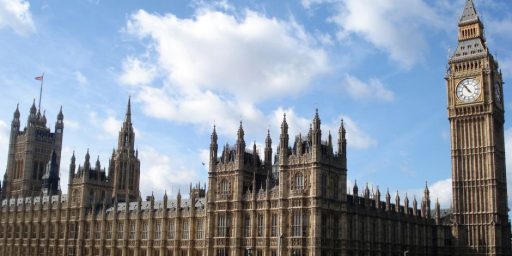
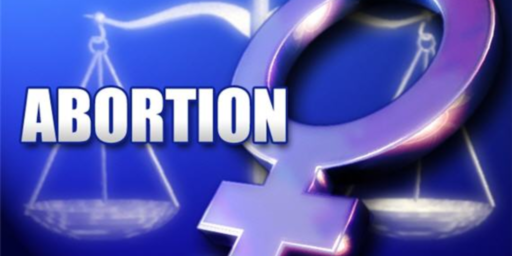
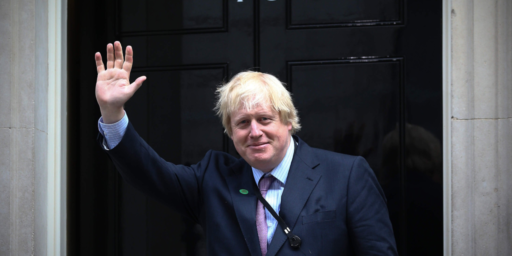
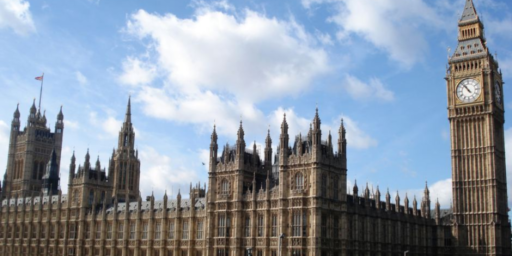
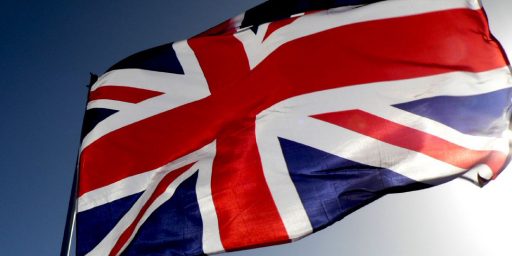
Good job, Chris.
There are a couple of things that I’ve found interesting in the current set of elections. The first is the impact that the first-ever televised debate among the leaders of three major parties (Tories, Labour, LibDem) has had. At least viewed from this side of the pond it seems to have awakened the election.
The second thing is how much all three parties have become Third Way parties. The differences among them sure look smaller than they used to. At least to an outsider like me.
I watched the returns on BBC several years ago and was fascinated by the reporting of strategic voting. For example, if I’m a LibDem in a district likely to be carried either by the Tories or Labour, who do I vote for? The answers I heard were many and it would seem to make predictions much more difficult than in the American system.
I’m not sure if I would agree that “nobody is talking about” devolution.
That was a major topic in the sets of debates in the three regions of Scotland, Wales and N. Ireland.
Each region held three leaders debates–I saw one of the Scottish ones and two from Wales and the devolution issue basically dominated the conversation.
Triumph: The “elephant in the room” is that nobody is really talking about the consequences of devolution in England; no question at the three national debates really tackled it (or political reform in general, except for the now-universal support for recalls and Lords reform of some type) at all.
Excellent post, Chris. Though it’s the Social Democratic and Labour Party, not Social and Democratic Labour Party.